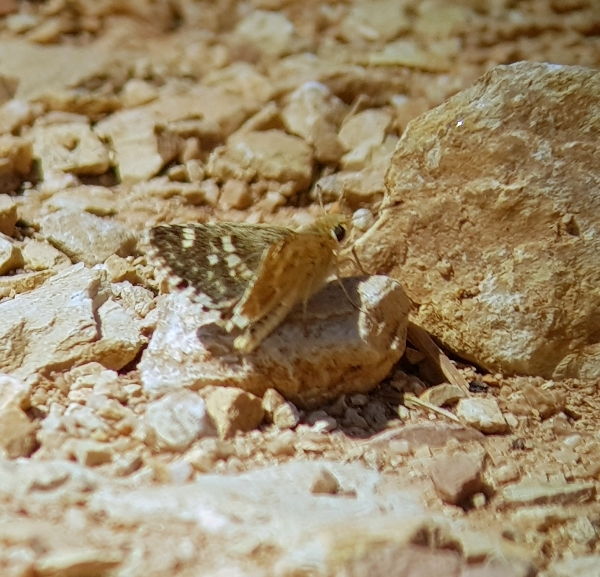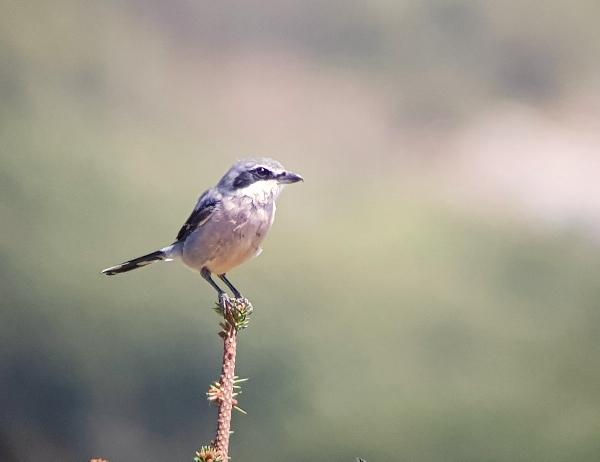
TRACK NEAR CASTELLAR – MARCHENILLA TRACK – ENCINAS DE BORRACHAS TRACK NEAR RONDA – SIERRA DE LAS NIEVES NATURE RESERVE NEAR RONDA – RONDA TOWN CENTRE
This was our last day and because we had flights booked in the late evening we all had a day left for birding except for Steve who was staying on for an extra 5 days. I dropped him off in the centre of Tarifa where he planned to stay for at least three of his extra 5 nights.
As we gathered to start our birding day we noted that many raptors were rising up from the forested mountain sides and catching the thermals, it was only 8:30am. We saw dozens of Honey Buzzards, several Egyptian Vultures, Black Kites and Booted Eagles. It was an exciting start to the day, we hoped that another mass raptor-passage was about to take place.

Honey Buzzards over the hotel this morning
We headed up through the hills behind Tarifa and down to Algeciras, the hills were covered in thick cloud, so visiting both Cazalla and Algorrobo Observatories would have been a waste of time. We passed through Algeciras and drove to San Roque where we turned inland and headed to Jimena del la Frontera.
We saw from the bus hundreds and hundreds of Honey Buzzards rising from the forest on either side of the road, so we pulled over onto a track to get out and watch this spectacle. It really was a mass-migration, nearly every tree around us had Honey Buzzards sitting in the canopy and in every direction there were swirling, masses of them, rising on thermals and at any one time you could see 500-1000 Honey Buzzards. This went on for nearly an hour, what a great show and such a superb finale to our trip. This is what we came for! Some of the birds were perched very close to us and we managed to photograph them before, they too, rose majestically into the sky.

this was the nerarest Honey Buzzard to us.
An old favourite track of mine runs from the village of Marchenilla toward San Pablo de Buceite, we took this track to look for one or two species missing from our list. Little Owl was one of those, I knew a place for this species and it was Andy who picked it out. Other than that, the track area was very quiet and devoid of bird life. We saw Crested Lark, Stonechat, Linnet and Goldfinch but not a lot else. The sky of course was full of raptors, we watched many Griffon Vultures, Short-toed Eagles, Booted Eagles, Common Kestrel, the masses of Honey Buzzards continued and we saw some Alpine Swifts.

Common Kestrel seen along the track
Further along the track we watched a ‘ringtail’ Montagu’s Harrier quartering the fields and we had a few more passerines, Willow Warbler, Sardinian Warbler and we had a couple of glimpses of what might have been a Rufous-tailed Bush Robin but we never confirmed it.
We then drove up towards Ronda, passing my Spanish ‘home town’ of Gaucin before stopping off in Algatocin to buy lunch supplies. We ate our picnic lunch sitting on rocks at the start of the Encinas de Borrachas track which translates to ‘drunken oak tree’ track. We couldn’t see a single oak for miles! A few butterflies dashed about, such as Sage Skipper, Small Copper, Common Blue and Bath White, but the bird life was virtually non-existent.

Sage Skipper
After a 30 minute walk we came up with a sum total of 4 species: Thekla Lark was new for the list and Blue Rock Thrush was new for some of the group’s list. Griffon Vultures were the main raptor sightings.
We followed the road up to Ronda then turned south-east towards the coast on the road to San Pedro we turned onto the reserve at Sierra de las Nieves (mountains of the snow), you do get snow on the peaks, Torrecilla is the highest peak at nearly 2,000 meters.

Iberian Grey Shrike
At the first car park we found just a single Common Redstart, usually there are dozens of migrants in the bushes there. In the open area beyond the car park we found a beautiful male Black-eared Wheatear and then a male Iberian Grey Shrike, that was a stunning bird too.

the rocky gorge where we saw Black Wheatear, Black Redstart and Rock Bunting
After searching an area near a water-trough, which was leaking, we moved on deeper into the natural park. At the trough we saw Willow Warbler, Great Tit and Chaffinch. We drove through a steep side gorge and pulled over when a few birds flew up onto the rocky sided gorge. Three Rock Buntings were with 4-6 Black Wheatears (all males) , The Buntings quickly disappeared but we enjoyed good views of the Wheatears. Whilst scanning for the buntings we found a couple of Black Redstarts, a nice male and a female type (could have been a juvenile).

another Honey Buzzard
A small patch of heathland was our next destination, just a couple of hundred meters further along the valley. There we searched for Spectacled and Dartford Warblers. We saw the later very well several times over, but the specky did not show at all. Scanning the sky for eagles and Red-billed Chough produced zilch!
A number of butterflies were dashing about we saw Sage Skipper, Cardinal Fritillary, Clouded Yellow and Bath White.It was now approaching 4pm and we had to leave, so we drove to the centre of Ronda and spent an hour enjoying the sights and sounds, drinking cool drinks and/or coffee. Positioned on a terrace overlooking the deep gorge, which bisects this very popular tourist town, it was a great way to end the tour. The group searched for Red-billed Chough but found only Feral Pigeons and Crag Martins, hey, ho you can’t see everything.

an unidentified Cricket? If you know the name of this little beast please let me know
We drove to Malaga and arrived at 7pm in good time for the flights home, I dropped off the minibus, picked up my car and drove back to Gaucin arriving just after 9pm. The trip was over, it had been a very slow start to the raptor migration, but it finally happened and everyone seemed to enjoy the tour, especially the final two days. We saw 163 species and heard Tawny Owl, this figure is about 6 species short of the average, I am not surprised! The weather this year has been extraordinary hot and dry and many species have not bred or have returned to Africa early.
If you enjoyed this blog and are tempted to join us next year, please get in touch: info@wingspanbirdtours.com
